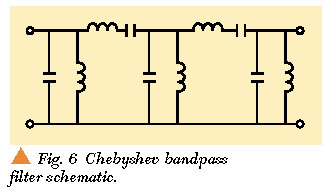I learned this in college 50 years ago but i never used it at work or home projects so I have forgotten how to do this.
I want to build a 3KHz band pass filter. If I remember correctly a coil & capacitor connected in parallel is a band pass filter is that correct? OR is it a coil & capacitor in series?
If I connect a signal generator to a speaker with the band pass filer in 1 of the wires to the speaker it should block all the other frequencies of the signal generator except the 3KHz tone.
I want to build a 3KHz band pass filter. If I remember correctly a coil & capacitor connected in parallel is a band pass filter is that correct? OR is it a coil & capacitor in series?
If I connect a signal generator to a speaker with the band pass filer in 1 of the wires to the speaker it should block all the other frequencies of the signal generator except the 3KHz tone.


